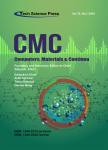Grey Wolf-Based Method for an Implicit Authentication of Smartphone Users
作者机构:University of JeddahCollege of Computing and Information Technology at KhulaisDepartment of Information TechnologyJeddahSaudi Arabia
出 版 物:《Computers, Materials & Continua》 (计算机、材料和连续体(英文))
年 卷 期:2023年第75卷第5期
页 面:3729-3741页
核心收录:
学科分类:080904[工学-电磁场与微波技术] 0810[工学-信息与通信工程] 0809[工学-电子科学与技术(可授工学、理学学位)] 08[工学] 080402[工学-测试计量技术及仪器] 0804[工学-仪器科学与技术] 081001[工学-通信与信息系统]
基 金:This work was funded by the University of Jeddah,Jeddah,Saudi Arabia,under grant No.(UJ-21-DR-25) The authors,therefore,acknowledge with thanks the University of Jeddah technical and financial support
主 题:Smartphone authentication implicit authentication grey wolf random forest feature selection
摘 要:Smartphones have now become an integral part of our everyday *** authentication on smartphones is often accomplished by mechanisms(like face unlock,pattern,or pin password)that authenticate the user’s *** technologies are simple,inexpensive,and fast for repeated ***,these technologies are still subject to assaults like smudge assaults and shoulder ***’touch behavior while using their cell phones might be used to authenticate them,which would solve the *** performance of the authentication process may be influenced by the attributes chosen(from these behaviors).The purpose of this study is to present an effective authentication technique that implicitly offers a better authentication method for smartphone usage while avoiding the cost of a particular device and considering the constrained capabilities of *** began by concentrating on feature selection methods utilizing the grey wolf optimization *** random forest classifier is used to evaluate these *** testing findings demonstrated that the grey wolf-based methodology works as a better optimum feature selection for building an implicit authentication mechanism for the smartphone environment when using a public *** achieved a 97.89%accuracy rate while utilizing just 16 of the 53 characteristics like utilizing minimum mobile resources mainly;processing power of the device and memory to validate ***,the findings revealed that our approach has a lower equal error rate(EER)of 0.5104,a false acceptance rate(FAR)of 1.00,and a false rejection rate(FRR)of 0.0209 compared to the methods discussed in the *** promising results will be used to create a mobile application that enables implicit validation of authorized users yet avoids current identification concerns and requires fewer mobile resources.



